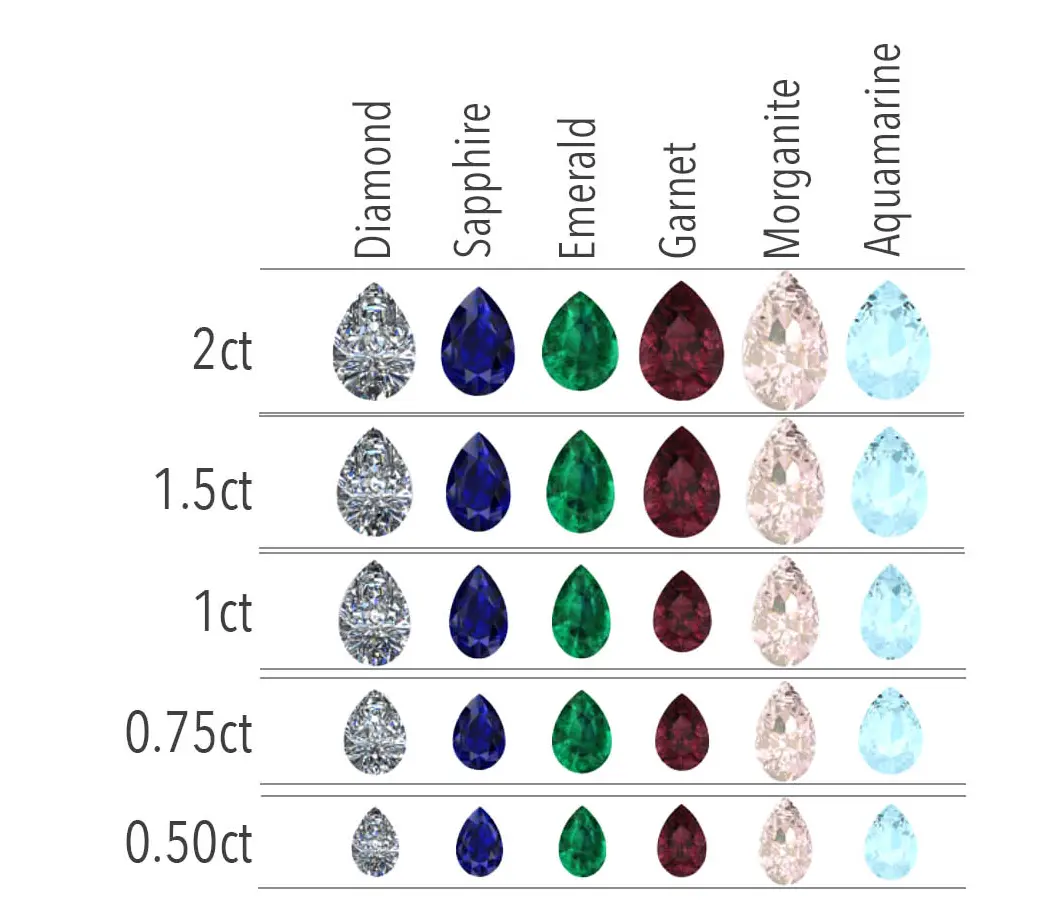Gem Stone Grading
Gem Stone Grading 
Gemstone grading and diamond grading, while sharing some common principles, involve distinct criteria and methodologies tailored to the unique characteristics of each type of gem. While both diamond and gemstone grading share some common elements, they differ significantly in their specific criteria, grading scales, tools, and market considerations. Understanding these differences is crucial for accurately evaluating and appraising each type of gem, ensuring transparency, and maintaining industry standards.
Carat 
Carat weight is a key measure of a gemstone's size and is one of the most important factors in determining its value. Larger gemstones are generally more valuable, but the price per carat can increase exponentially with size, depending on the type and quality of the gemstone. The market demand for specific carat weights can also affect value. Popular sizes, such as those around 1 carat, might carry a premium due to higher demand.

Cut 
The cut of a Gem stone is a critical aspect of its overall beauty and value, as it determines how well the Gem stone reflects and refracts light. Unlike the other "Four Cs" (Carat, Color, and Clarity), the cut is not about the Gem stone's inherent characteristics but rather how skillfully it has been shaped and faceted by the cutter. The cut grade encompasses three main attributes: proportions, symmetry, and polish. Proportions refer to the angles and relative measurements of the Gem stone's facets, which affect its ability to handle light. Symmetry deals with the precision and alignment of the Gem stone's facets, ensuring that each facet is uniformly shaped and positioned. Polish refers to the surface quality and smoothness of the Gem stone facets. The cut is graded on a scale from Excellent to Poor, with an Excellent cut offering the best brilliance, fire, and scintillation. A well-cut Gem stone will appear more vibrant and lively, making it highly prized in the market.

Color 
There are three main parameters that the jewellery industry uses to grade a gemstone: by purity of its hue, the depth of tone, and its colour saturation. The best value is in colours that include "slight" traces of other colours, are not too dark or too light, and have a lot of saturated colour. Nearly all gemstones today, have been treated to enhance their colour. The most common methods of treatment are heating (nearly always seen with aquamarine, citrine, amethyst, sapphire, ruby and tanzanite), bleaching (commonly seen with pearls), and irradiation (performed on nearly all blue topaz).

Clarity 
Almost all gemstones contain inclusions. Even those highly prized pieces that are almost perfect have at least some inclusions. Absolute clarity is a rarity in gemstones as it is natural. They are far and few, in fact almost impossible to find. Thus the flawless ones are invaluable and extremely expensive. The best value is found in gems that are moderately 'included' like those in most of the gemstone jewellery. Emeralds are typically treated with colourless oil, wax or resin to minimize surface-reaching inclusions.

